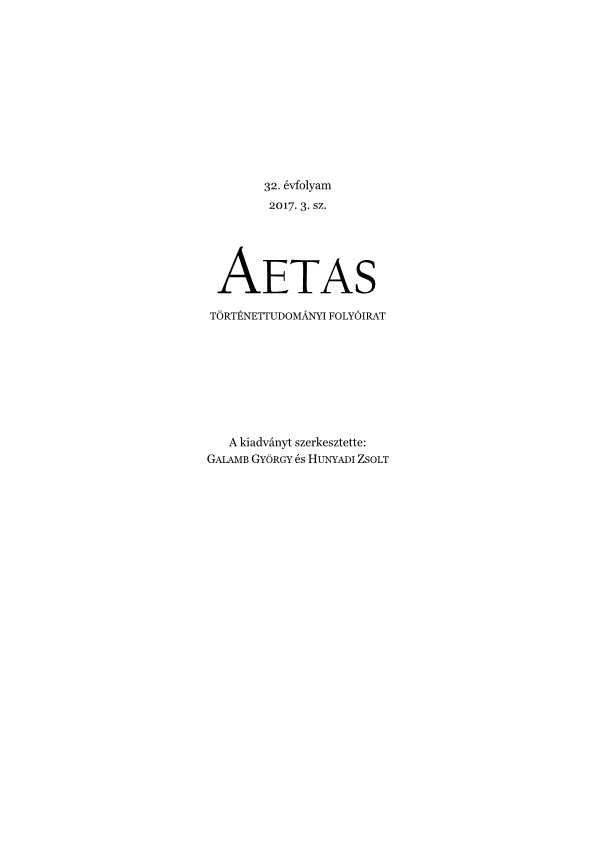
Tornyok harca a középkori Rómában
Alberto di Santo: Guerre di torri. Violenza e conflitto a Roma tra 1200 e 1500. Viella, Roma, 2016
More...We kindly inform you that, as long as the subject affiliation of our 300.000+ articles is in progress, you might get unsufficient or no results on your third level or second level search. In this case, please broaden your search criteria.

Alberto di Santo: Guerre di torri. Violenza e conflitto a Roma tra 1200 e 1500. Viella, Roma, 2016
More...
We can distinguished in the component of Voineşti hoard (Romania) three groups of items made in different jewelry traditions. The group of decorations of Old Russian origin from this hoard has very close analogies in the compositions of two treasures from Cheremno (Poland). The cessation of the hordes from Voineşti and Cheremno took place in the second half of the 13th – early 14th centuries. The complexes from Cheremno are the ones of the western places of discovering Old Rus’ ornaments, some of which came from the workshops of the Galician lands. The finds from Voineşti make the southwestern border of the distribution of such objects, while this complex was supplemented with items, characteristic for the jewelry production of the Carpathian-Balkan region.
More...
The present paper addresses the problem of the spreading of stone vessels in the urban settlements east of the Carpathians, controlled by the Golden Horde in the 14th century. Two artefacts discovered in the well-known archaeological site at CosteștiGârlea (Ialoveni district) are studied as an example. The purpose of the paper is to provide new data on this category of vessels recovered during the archaeological excavations in the perimeter of the important Djuchid settlement from Botna Valley in the autumn of 2017. The presented vestiges were found in the filling of a lightly deepened in the ground dwelling, located on a platform on the left side of the Botna river valley, strongly affected by the landslides. The assemblage was represented, along with the fragmentary stone containers, by the numerous and various categories of findings, such as various types of clay vessels, fragments of glass vessels, numerous faunistic remains, items made of iron, bronze, stone, burnt clay and bone, as well as 10 Djuchid copper coins, dated back to the 14th century. The vessels discussed here were made of gray stone (steatite), with the surface decorated in several levels with straight, zigzag and oblique incisions. The information obtained as a result of studying these original discoveries for our territory will complement the database on the morphology and provenance of the stone vessels, the territorial limits of spreading of this category of artefacts, as well as certain views regarding the economic life in the western part of the area subjected to the Gold Horde in the 14th century.
More...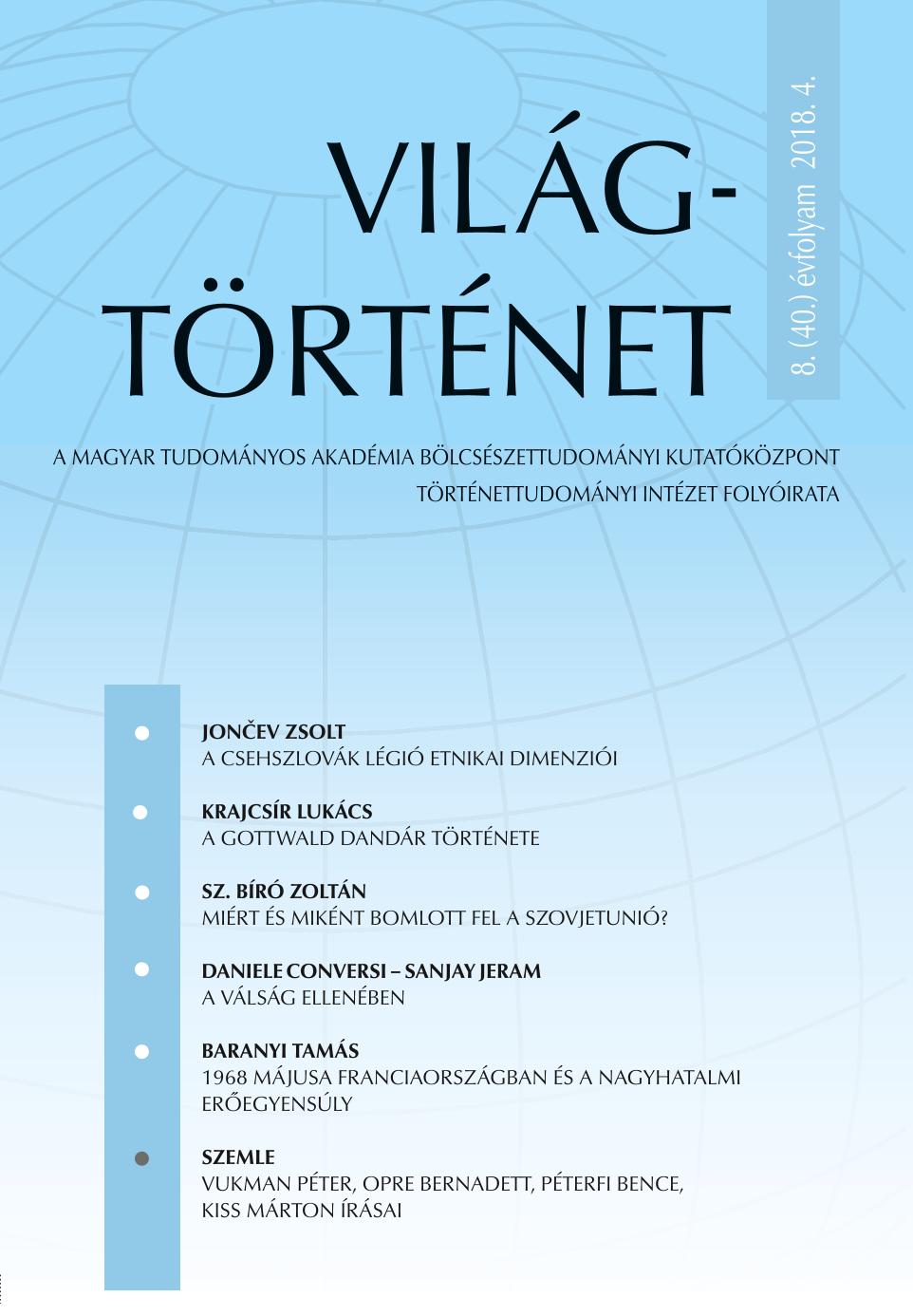
Mordovin Maxim: Textilvégek védjegyei. A textilkereskedelem régészeti emlékei a Magyar Királyság területén. Bp., MTA BTK Történettudományi Intézet, 2018. 355 p. (Magyar Történelmi Emlékek. Adattárak.)
More...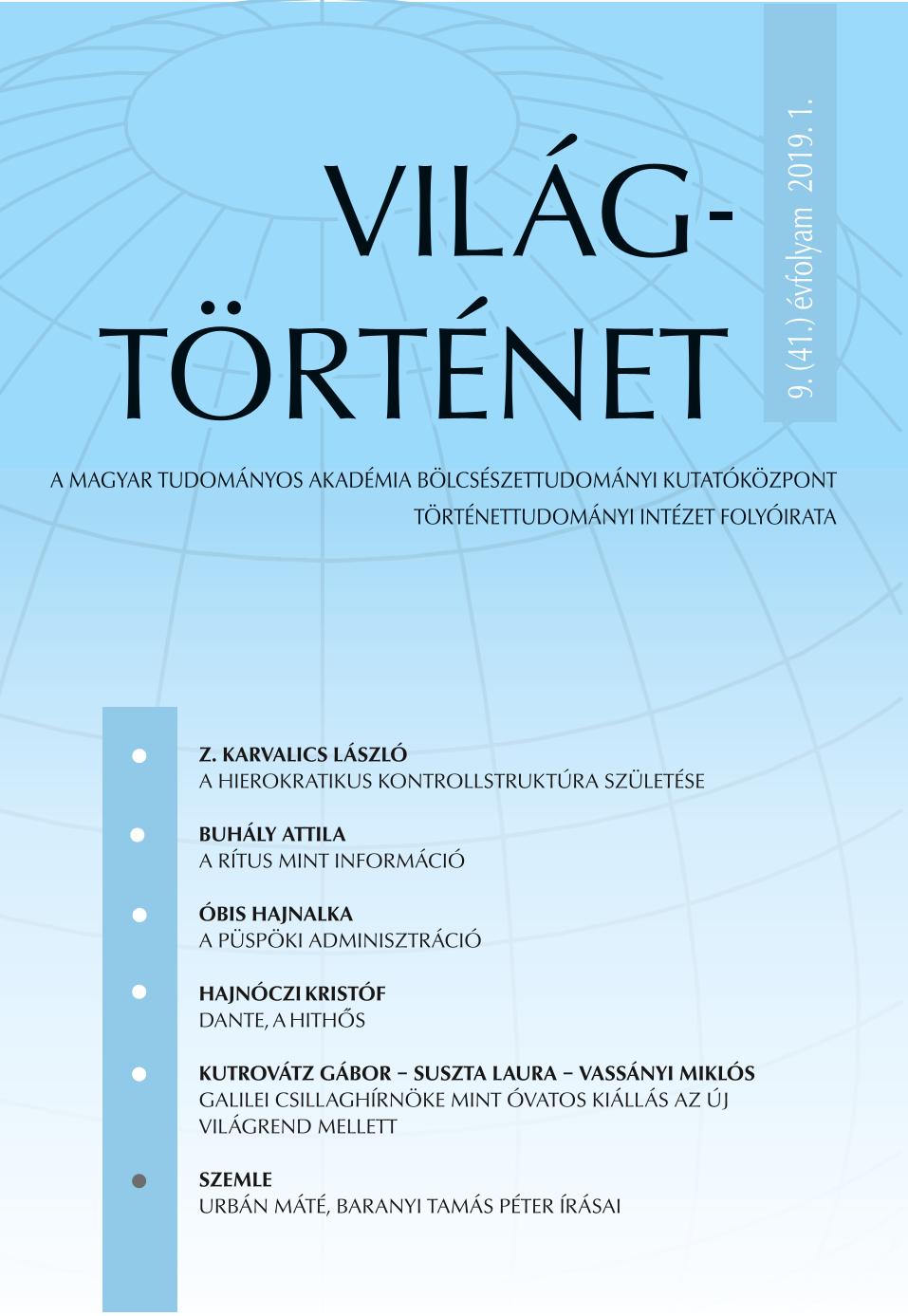
The sixteenth century was an interesting time from the point of view of the luck of the works of Dante Alighieri. The Monarchia has had a bit different story from the vernacular works of Dante. Barbi in his work of four hundred pages devotes two pages there. The latin text, under the ecclesiastical ban for almost two centuries, it seems, does not arouse much curiosity from the part of the humanists of late fifteenth, early sixteenth century. The situation changed in the midsixteenth century. The reorganization of ecclesiastical institutions in defence of the orthodox Catholic faith, as first compilation of various regional lists of books for now discouraged or prohibited by reading marks the beginning of a different era especially compared to the two previous decades, years in which, on the contrary, first in Venice, but also in smaller cities such as Ferrara, Modena or were printed many works of heterodox matrix. The first attempts to compile such lists, the first and the second Mlilano in Venice by the Apostolic Nuncio to the Republic of Venice, Msgr. Giovanni Della Casa, focus almost exclusively on the works of dubious origin or heterodox obvious matrix Protestant, recently released. Thus, in the Catalogo of Della Casa in 1549 there is not any reference to works previously already condemned by the Church, such as the Monarchia of Dante. The Florentine list however, at the end of 1552, lists among the works to avoid the “Monarchia Dantis,” ban that will be repeated in the list of Venice of 1554 and will have a further confirmation in the Roman Index in 1559, in the latter place with a brief explanation. The first printed edition of the Monarchia was released in October 1559 in Basel, work of Johann Oporinus, even not as an independent work, but in the appendix, with three other texts, titled De formula Romani Imperii Libellus by Andrea Alciato. So in Florence in 1552 was banned a manuscript text yet. This manuscript, however, has disappeared as a result, so it seems according to research by Gian Paolo Renello, prior to the new edition of Dante to the next anniversary of the Florentine poet. To draw attention to the appearance in the various lists of banned books of Dante’s Pier Paolo Vergerio (1498–1565), recently deposed bishop of Capodistria, which in the same period in 1550 in his Swiss exile tries to fight the Catholic Church, inventing the genre of “controindici” or “corrected indexes”, correcting, completing and reviewing the Catholic lists always personally. When, at the end of the proceedings of the Council of Trent Roman exits the central list of banned books in his response Vergerio does not leave without words that the Monarchia of Dante is always present in. We do not know, what was his role in bringing the manuscript to prevent Basel, which is based not only on the edtio princeps but also the conteporary German version by Heroldt, nor how the other Istrian, Matja Vlacic, latinized as Flacius Illiricus (1520–1575), one of the closest associates of Martin Luther, has entered into possession, if not through his friend Vergerius, of Dante’s work, for use it in his Catalogus testium veritatis (1566), a turning point in the history of the European reception of the Monarchia, while convinced that the author was another Dante, a friend of Poliziano.
More...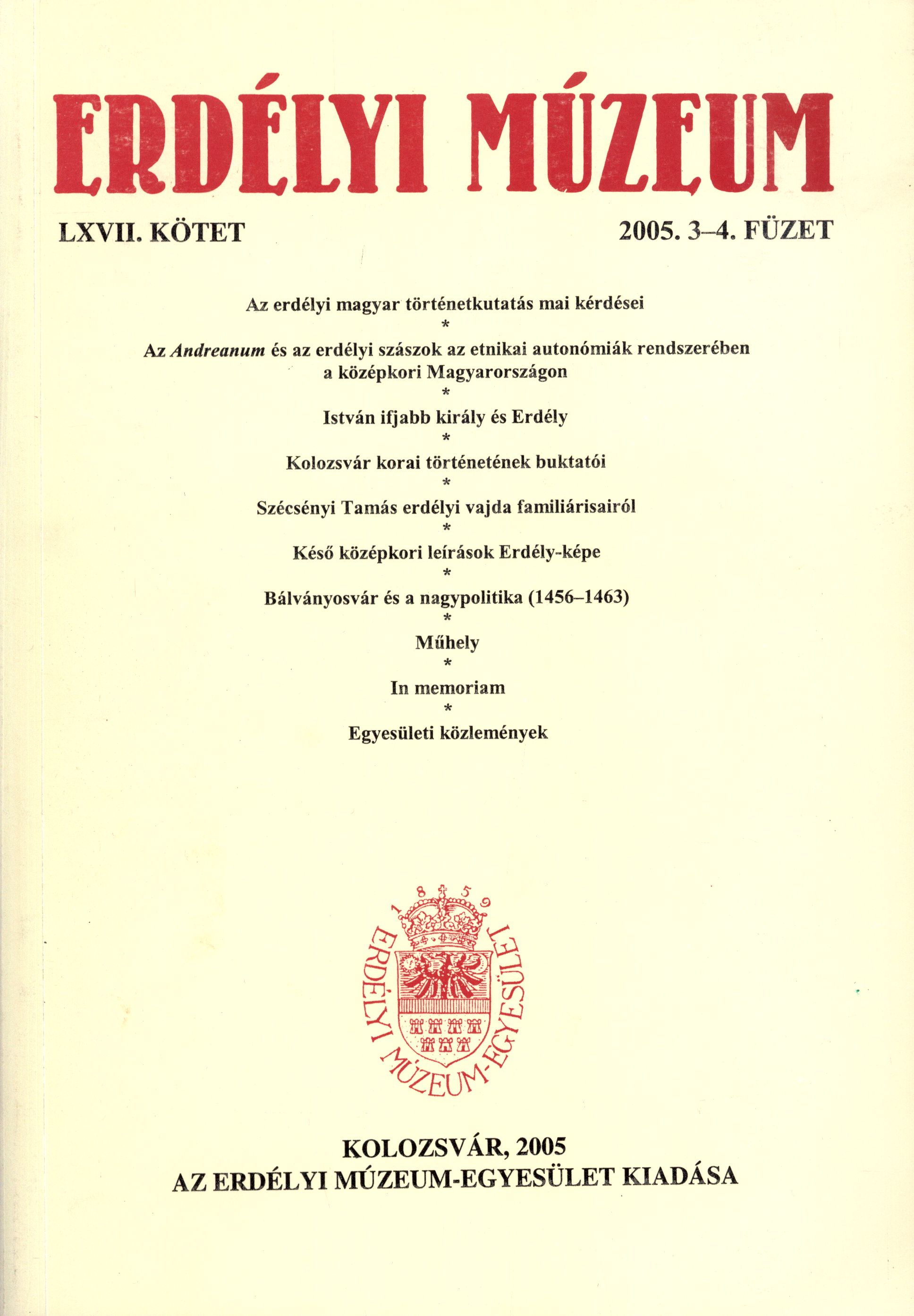
The history of the dynasty of the Árpáds was frequently disturbed by armed conflicts between the members of the royal family. The last of these clashes took place in 1264–1265 between King Béla IV (1235– 1270) and his elder son, Prince Stephen, the future Stephen V (1270–1272), who governed Transylvania from 1260. The present study scrutinises the beginnings of the war. On the basis of the available sources it is clear that the war must have started on the first days of December 1264, so the wedding of Prince Béla – the younger son of King Béla IV – on 5 October 1264, contrary to previous opinions, was attended by Prince Stephen, as it is suggested by the chronicle of Ottokar von Steier.
More...
The article presents a few completions and emendations of the archontological lists published by Pál Engel (Magyarország világi archontológiája 1301–1457 [The secular archontology of Hungary]. Budapest: MTA Történettudományi Intézet, 1996, 2 vols). These completions and emendations are based on the 2nd volume of the new corpus of medieval Transylvanian documents (Zsigmond Jakó, ed., Codex diplomaticus Transsylvaniae. Diplomata, epistolae et alia instrumenta litteraria res Transsylvanas illustrantia. Erdélyi Okmánytár. Oklevelek, levelek és más írásos emlékek Erdély történetéhez, vol. 2 [1301–1339]. Budapest, Magyar Országos Levéltár, 2004) and refer, on the one hand, to the office bearings of some 14th century Transylvanian officials, such as vicevoivodes, castellans, comites, while on the other hand – in two cases – it comes to the result that the respective office bearers belonged to other families than what was specified by Engel.
More...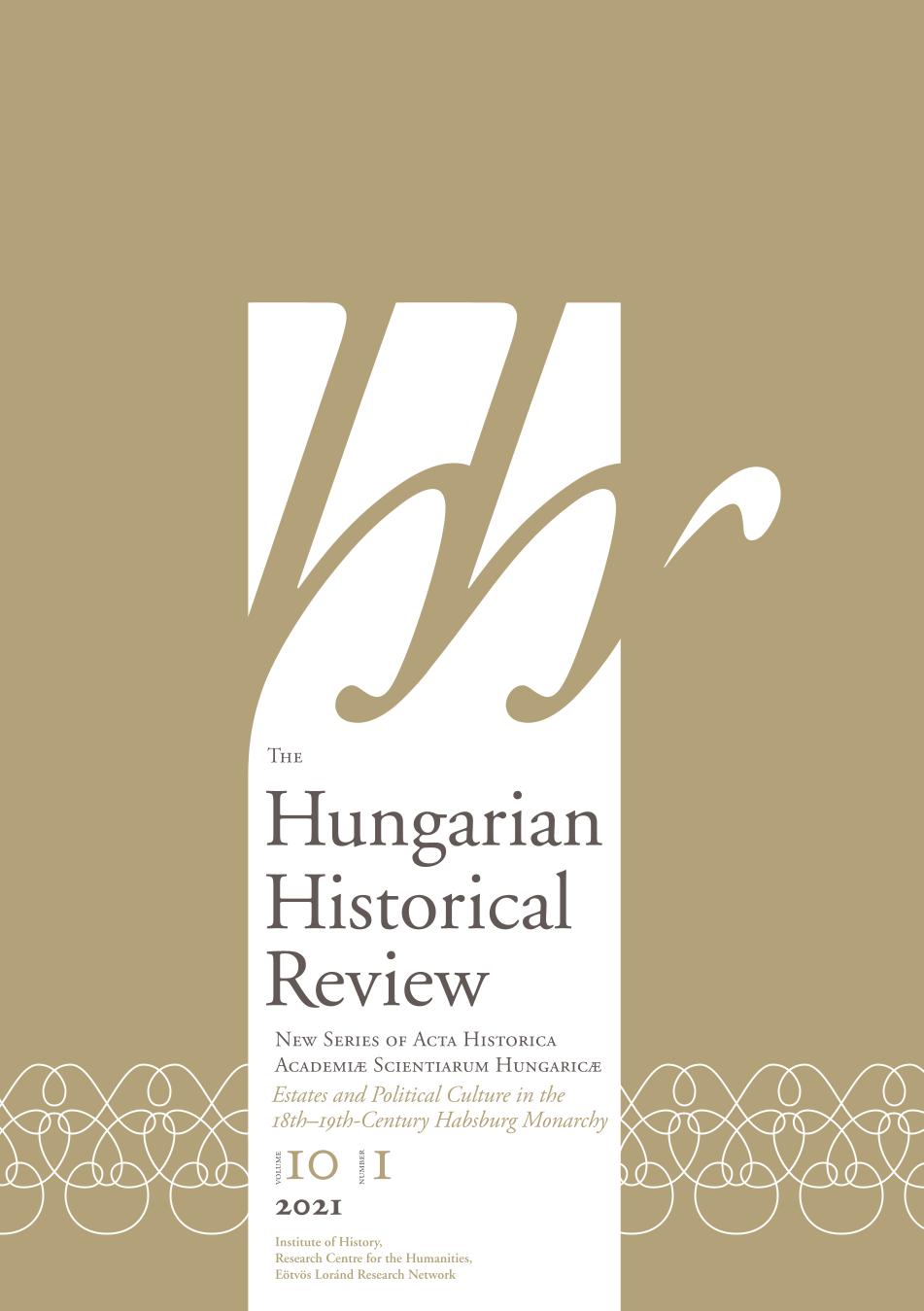
Történetírás és történetírók az Árpád-kori Magyarországon (XI–XIII. század közepe) [The writing and writers of history in Árpádera Hungary, from the eleventh century to the middle of the thirteenth century]. By László Veszprémy. Budapest: Line Design, 2019. 464 pp.
More...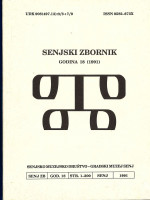
In the article the author analyzes the distribution of psalms in Lobkovic's psalter of 1359 (Lob) on certain services of days and weeks. The psalms are usually preluded by the oldest psalm antiphonies. Appart from these two most stable constituent elements of every hour Lob does not register other parts which form the physiognomy of the hour as: hymns, responsories, capitularies and orations, which were found in separate collections. The division of psalms on hours correspondsto their distribution in liturgy books of the Western church from the sixth century on. Lob is written over the whole page. This is characteristic for the old way of codex writing. Large initials mark the beginning of psalms, their traditional ornaments remind us of the Romanic decoration of Latin codices thus giving Lob the patina of great antiquity. In Lob codex the psalms are divided into common services for holidays of saints of all categories. They contain all elements which form a corpus of certain hours so that part of Lob, f. 99v-159v Commune sanctorum, shows the Franciscan redaction of the breviary of 13th century, in which all old collections of elements of certain hours were integrated. Ps 113 is replaced by Ps 116 on I. Evening, the ninth responsory of the Morning is replaced by the hymn Te Deum while all hours have only one final oration. Such a structure is seen in 17 services in Lob, in the services which honour saints who have no office of their own. Nevertheless the service in the honour of Saint Trinity differs from others as it has an older composition of hours with three long hours: I. Evening, Morning with laudations and II. Evening. These hours have their own orations. Two of them, the first and the third have been extinguished. The first and the second have been recorded by old Roman and Ambrosian sacramentaries of 9th century. Saint Trinity office contains language rarities such as: Spasb instead of Isus, prefix vi instead of iz, p repositioning instead of po. This implies that Lob belongs to the oldest Krk i. e. Vrbnik cycle of Glagolitic liturgic codices. More Glagolitic fragments of the breviary of older redaction with many extinguished orations (Vrbnik and Trst fragments of 13th century) originate from this cycle. These prayers obviously connect Croatian Glagolitic liturgic codices with Cyrillo-Metho-dian literary liturgic fond of 10th or at the latest 11th century when a translation of Old Church Slavonic sacramentals, the books of the oldest mass prayers common to Old Church Slavonic liturgy books, existed.
More...
The purpose of the article is to introduce into the scientific circulation, attribution and research until recently unknown to the numismatists, a rare and little-studied type of local imitation of Khan Toktamysh dirhems (1380–1399) of the minting of Prince Volodymyr Olgerdovych of Kyiv (1362–1394). The author examines the circumstances and geography of coin detection, analyses the results of metrological research of findings, raises questions about the eminent, the causes of this type of imitation, the period of minting, the specifics of circulation, and offers own version of the attribution of the “princely sign” on the obverse of the coins. The research methodology is outlined by the principles of scientific, historicism, objectivity, methods of analysis, classification, generalisation, historical-genetic and historical-typological, method of stamp analysis. Scientific novelty. A probable prototype for imitation could be the dirhem of Khan Toktamysh of the mint of Saray al-Jadid with the date 794. At present, four coins of this type engraved by one stamp for an obverse and two different stamps for reverse known from the numismatic literature. The main argument that allows us to link the investigated coinage with Volodymyr Olgerdovych is the stylistic identity of the “princely sign” on the obverse of imitation with the heraldic element known to the numismatists of the denariuses of that particular prince. The date (794 AD), which is present on the coin, as well as the historical circumstances of the displacement of Volodymyr from the Kyiv table by Grand Duke of Lithuania Vytautas Keistutovich, make it possible to outline the period of minting of this type of coins 1392–1394. Comparison of metrological indicators of the studied coins, synchronous in time of regular coinage dirhems and previously known types of imitation, shows that dirhems with the “princely sign” occupy an intermediate place in this series, inferior to the weight and diameter of the Horde emissions, but far outweighed by these indicators, the known denariuses of Volodymyr Olgerdovych. The results of X-ray fluorescence analysis of the coin alloy showed a very high silver content and low impurities of gold and copper. The oval shape of the coins indicates the use of “wire” coinage techniques and the relative accuracy of the reproduction of the Arabic text on the coin stamps proves their production by a professional, which is either understood in the Kufic font, or has seen a coin prototype. Mapping of places of detection of coins’ imitations with the “princely sign” of Volodymyr Olgerdovych (along the broad line of the Lithuanian-Tatar border within the southern, eastern terrains of the Kyiv apanage principality and the neighbouring southern lands of the Principality of Siver). The numismatic sources introduced into the scientific circulation and the updated source information allow us to assume that economic motives were the primary purpose of the studied coinage. Namely, it was the filling of the local money market within the Kyiv principality by the coin mass. Existing numismatic sources do not sufficiently confirm the involvement of this mint in trading or paying tribute to the Horde. However, it does not deny the possibility of the sporadic penetration of Kyiv dirhem imitation with the “princely sign” into the vast expanses of the Lithuanian-Horde border, mainly through retail trade and money transactions. We suppose that one of the reasons for the coinage of this type of imitation by Volodymyr Olgerdovych could have been provoked by the complex military-political realities in the region, the prince’s desire for broader political autonomy and revisiting in the future his status as a tribute and vassal in relations with the Horde and the Grand Duchy of Lithuania. The author’s observations suggest stylistic connection of the “princely sign” of our coin with the generic emblems of the Kyiv princes of the X-XI centuries. The precise spatial orientation of this heraldic element on the coins studied makes it possible to raise the issue of revising the idea of the spatial orientation of the “princely sign” on the Kyiv denariuses of Volodymyr Olgerdovych. The Conclusions. A preliminary study and attribution of a numismatic monument discovered gives grounds to claim that we are dealing with a new, little-known and currently unknown type of imitation of the coins of Khan Toktamysh by PrinceVolodymyr Olgerdovych of Kyiv (1362–1394). The presence on the attributed coin a heraldic element in the form of a “princely sign” may indicate to the formalised coinage and its affiliation with the regular regional imitation of Juchid coins.
More...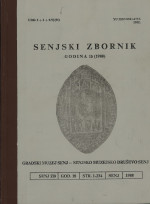
In dem ersten Teil zeichnet der Verfasser die Verhältnisse in der Kirche, und in dem zweiten bes-pricht er das Statut des Senjer Domkapitels. Die Verhältnisse in der Kirche beeinflusste allgemeine Krise der Kirche im XIV. Jh. Bis 1332 hatte Senjer Domkapiteln Recht neuen Bischof zu wählen, und der Spliter Erzbischof bestätigte ihn da-nach. Im XIV. Jh. ernannte der Papst ausnahmslos alle Ausländer. Unter ihnen soli Augustiner Ivan von Piša erwähnt werden. Seine Ernennung bezeichnete eine Wendung in der Geschichte der Senjer Kirche, und dann entstand auch das Statut von dem Domkapitel. Am Ende dieses Jahrhunderts ragten zwei bedeutende Mitglieder der Familie de Cardinalibus hervor: Ivan und Leonardo.In Senj und seiner Umgebung hatten die Benediktiner und die Pauliner je zwei KJöster, die Franzi-skaner und die Dominikaner je einen. In demselben Jahrhundert erwähnt man in Senj 17 Kirchen, aber man kann mit Sicherheit über mehr als 17 Kirchen sprechen. Aus dieser Zeit sind in Senj nur zwei Gräber ausser der Kirche be-kannt. Die Liturgie iibte man im Altkirchenslawischen aus aber es ist leicht möglich, dass sie wenig-stens zeitweilig in den Ordenskirchen im Lateinischen ausgeiibt wurde.Das Statut des Senjer Domkapitels wurde bis heute zweimal veröffentlicht: bei Kukuljević 1852, bei Sladović 1856. Bis heute sind drei Handschriften erhalten, und alle drei sind jetzt im Archiv der Jugoslawischen Akademie der Wissenschaften und Kiinste aufbewahrt. In Bezug auf den Inhalt, die veröffentlichten Ausgaben und die Handschriften weichen voneinander nicht viel ab.Allerorten kann man lesen, dass der Senjer Statut im J. 1380 gebracht wurde, aber die Analyse des Einleitungsteils entdeckt die Hilfselemente zur Datierung des Statutes, so dass man das oben erwähnte Datum ohne Zweifel ablehnen kann. Der Meinung des Verfassers nach, dieses Statut entstand im J. 1340, also zur Zeit Papstes Benedic-tus des Zwölften, als Senjer Bischof Augustiner Ivan von Pisa war. Das beweisen noch einige Elementedes Statutes. Et ist noch unerklärt geblieben, warum in alien Handschriften das Jahr 1380 als das Jahr der Entstehung erwähnt wurde. Das Statut bestimmt Rechte und Verpflichtungen des Domkapitels und einiger Domherren, Ver-hältnisse zwischen dem Kapitel und dem Blschof, Gottesident in der Kathedrale, Einkommen des Bischofs und des Kapitels u.s.w. Das Statut ist im Rahmen der Kirchenproblematik geblieben, und selten hat es die Verhältnisse mit den Weltbehörden berührt. Es wurde urspriinglich im Glagolitischen geschrieben, was am Ende des Handschrift IId-/ö ausdriicklich gesagt wurde. Alle aufbewahrten Handschriften sind im lateinischenSchriften geschrieben. Das Statut ist ein wichtiges Dokument zur Kenntnis der rechtlichen und kirchlichen Geschichte auf unserem Gebiet.
More...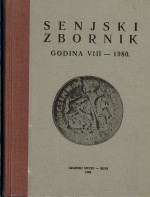
Nakon 300 godina borbi za glagoljicu i slavensko bogoslužje senjski biskup, čija se jurisdikcija protezala na isključivo glagoljaško područje, prvi traži legalizaciju crkvena liturgijskog jezika, tako duboko uvriježena u njegovim crkvama. I kad je god. 1248. dobio dopuštenje glagoljanja, nastaje procvat prepisivanja glag. lit. kodeksa kao uostalom i u čitavoj Europi. Naime, to je postkoncilsko vrijeme nakon IV Lateranskog koncila g. 1215. koji zahtijeva reformu lit. knjiga, naročito brevijara (časoslova) i izjednačenje bogoslužja u čitavoj zapadnoj Crkvi.
More...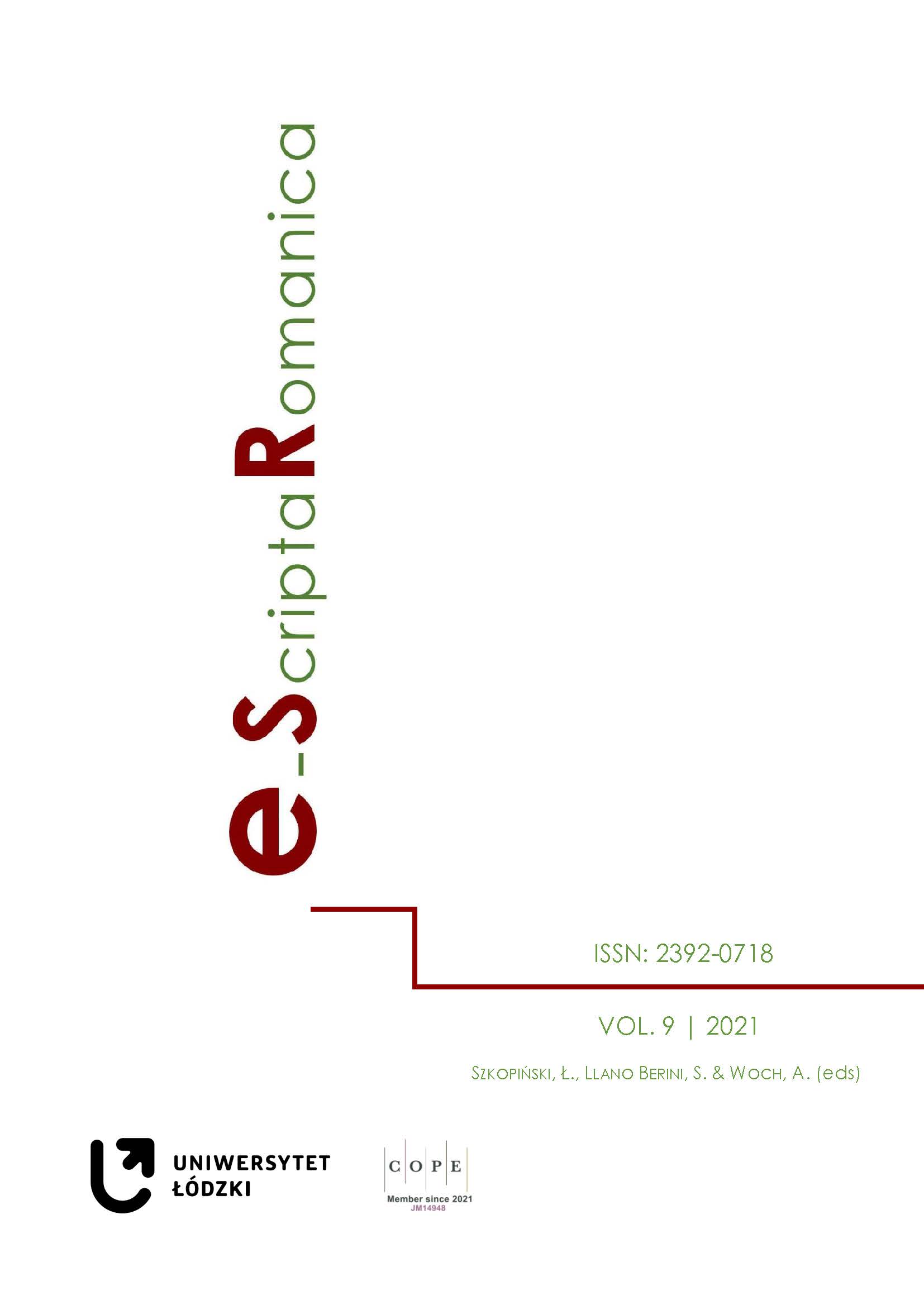
This article proposes to study the royal madness in the Estoria de España, a chronicle retracing the history of Spain from its origins, written at the end of the 13th century under the aegis of the King of Castile and León, Alfonso X the Wise. In the Middle Ages, the paradigm of madness was clearly codified and referred to a certain number of topics, such as illness, sin, or specific physical attributes, which could concern all categories of the population. Nevertheless, the royal figure is normally excluded from this paradigm because madness and all the disturbances it entails would undermine the very essence of royalty. Strictly speaking, the king can be associated with other forms of misconduct assimilated to insanity, such as sin or divine retribution, but not with mental illness as such. In this context, how does the Estoria de España, which narrates the history of Spain through its kings, reconcile the image of the madness of certain kings - particularly the Roman emperors - inherited from its sources with the conceptions of the 13th century? After a reminder of the conception of madness in the Middle Ages, I analyse the concept of madness under the reign of Alfonso X, through the study of the legal code of the Siete Partidas, and the Estoria de España in order to understand its meaning and function in the narration of historical facts.
More...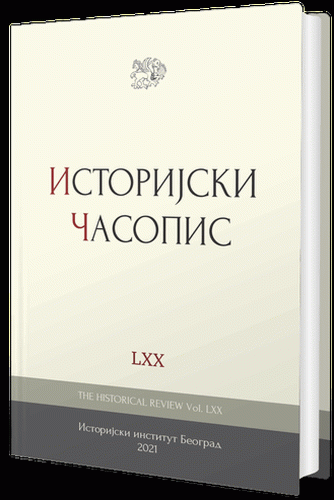
This paper discusses a passage from the poem De triumphis ecclesiae by John of Garland, a medieval intellectual and professor in Paris, compiled in ca. 1252, and referring to the Mongol invasion and the death of the enygmatic “leader of Thrace”. In the text, it is concluded that the enigmatic person, mentioned by the author, is the Bulgarian ruler John Asen II (1218-1241). Along with the writings of Cistercite monk Alberic of Trois-Fontaines, chronicler Philippe Mouskes and Byzantine historian George Akropolites, the poem of John of Garland is the fourth source in which the death of the Bulgarian ruler is recorded. Besides, it is the only text in which the death of John Asen II is associated with the Mongol invasion.
More...
The monastery of St. John the Baptist on the Mount Menoikeion in the vicinity of Serrai was founded in around 1275. It enjoyed considerable favour of the Queen Simonis and since 1332 its patron was John Kantakouzenos. After the Serbian conquest of eastern Macedonia, the monastery prospered owing to the care of Stephen Dušan. The ties between the Serbian ruler and the monastic community are testified by the Greek documents of Dušan’s chancery. There are nine preserved prostagmata and chrysobulls of the Serbian King and Tsar from the period of 1345–1355. The analysis of their data, along with the use of other sources, will provide a basis for the attempted sketch of relations between Stephen Dušan and the influential Greek spiritual institution in southeast Macedonia.
More...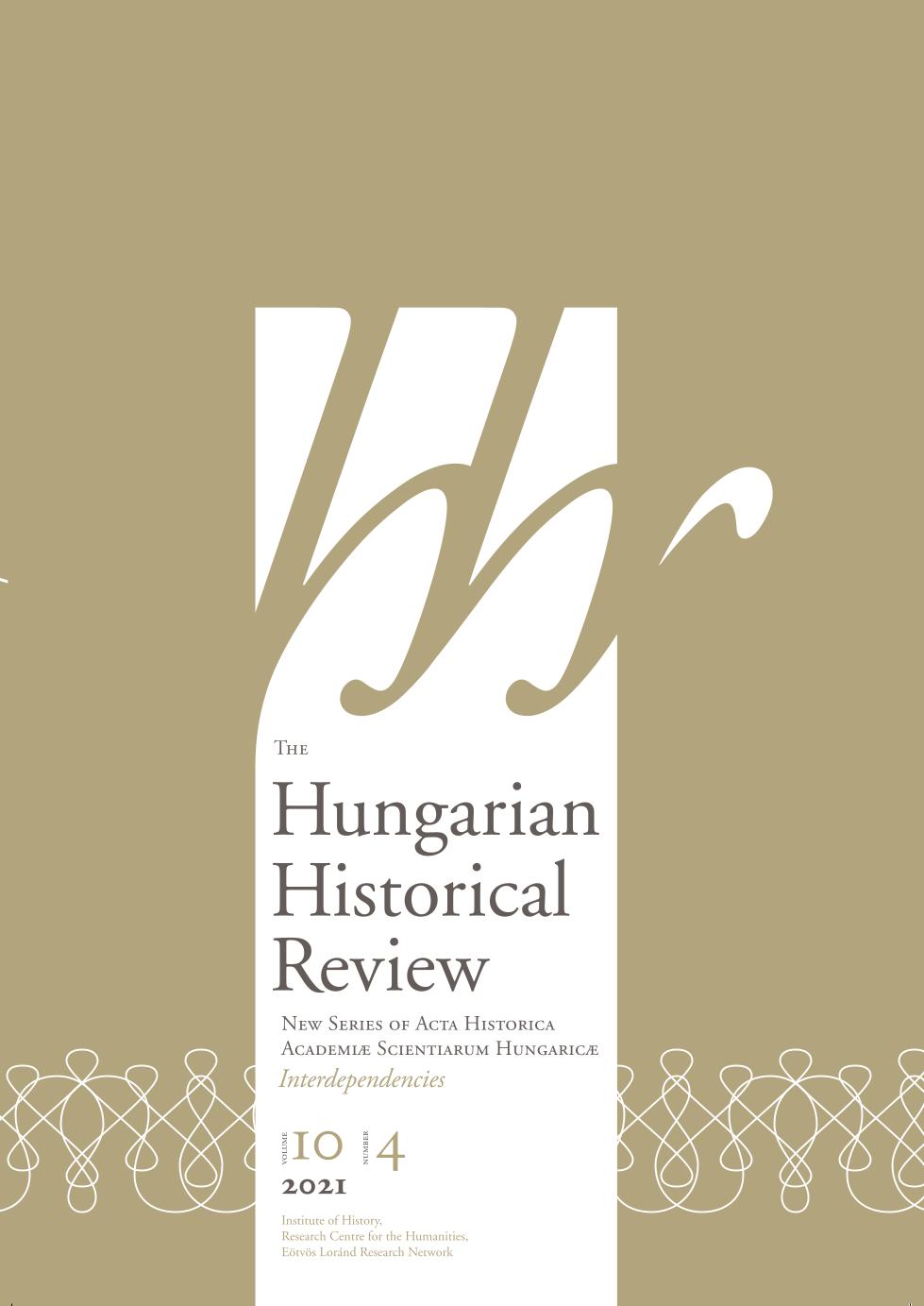
Vrijeme sazrijevanja, vrijeme razaranja: Hrvatske zemlje u kasnome srednjem vijeku [Time of development, time of destruction: Croatian lands in the late Middle Ages]. Edited by Marija Karbić. Biblioteka Povijest Hrvata 3. Matica hrvatska: Zagreb, 2019. pp. 637.
More...
Dalmatia and the Exercise of Royal Authority in the Árpád-Era Kingdom of Hungary. By Judit Gál. Budapest: Research Centre for the Humanities, 2020. 228 pp.
More...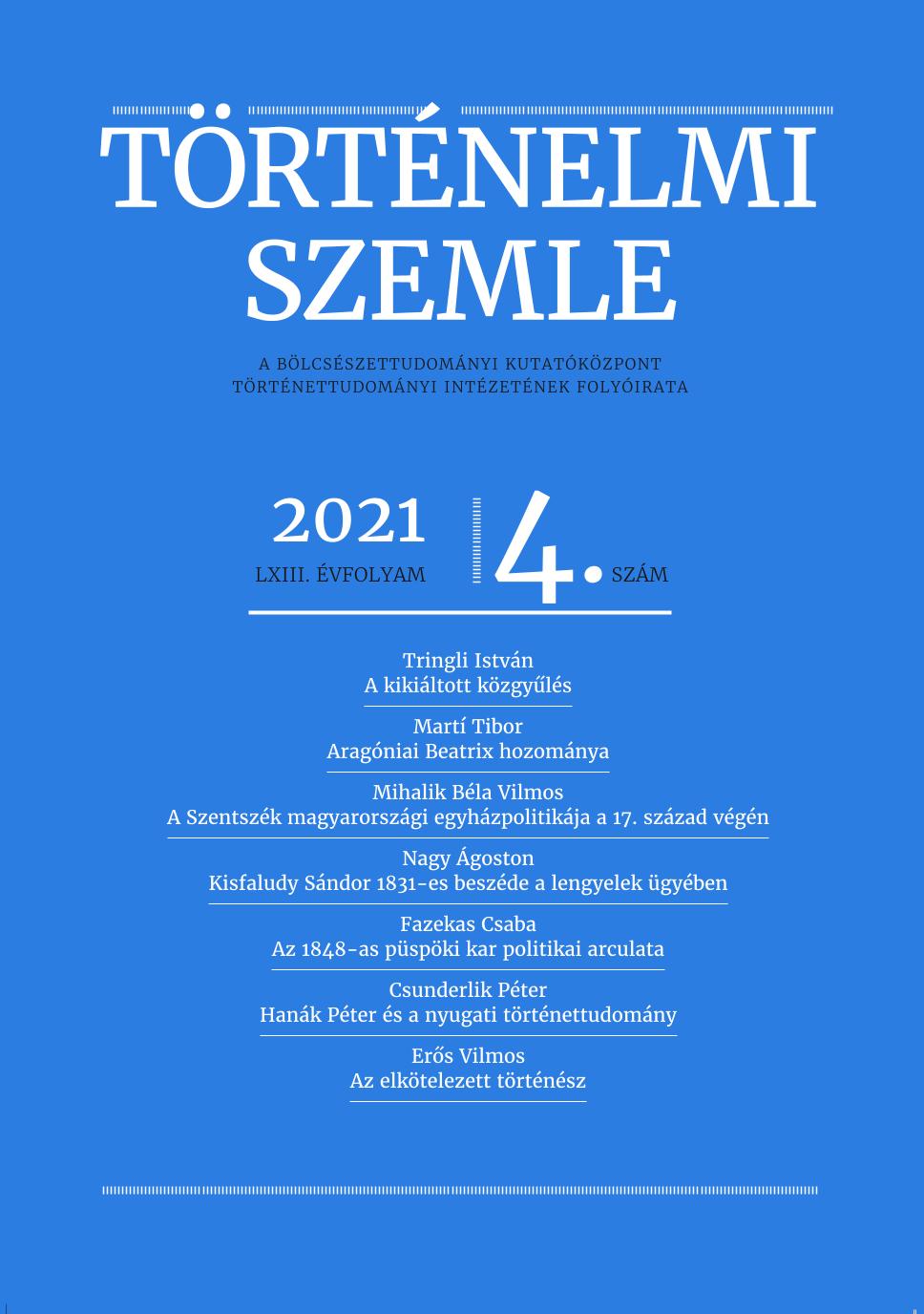
The date of the introduction of the proclaimed congregation (proclamata congregatio generalis) has so far been wrongly defined, and its essence misinterpretated. This legal procedure was introduced in 1397, and abolished in 1486. It was applied in cases of acts of might committed within a year. If the complaint was proved just, immediate satisfaction was due to the plaintiff. It was in order to prove the complaint that the proclaimed congregation was introduced as a means of inquisition. The origins of this procedure go back to the 1350s. The word “proclaimed” (proclamata) was used to refer to other congregations as well in the fourteenth century.
More...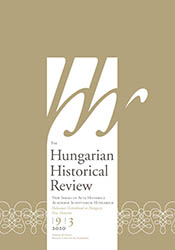
Az 1196–1235 közötti magyar történelem nyugati elbeszélő forrásainak kritikája [A critical study of the Western narrative sources of Hungarian history from 1196 until 1235]. By Tamás Körmendi. Budapest: MTA Bölcsészettudományi Kutatóközpont Történettudományi Intézet, 2019. 229 pp.
More...